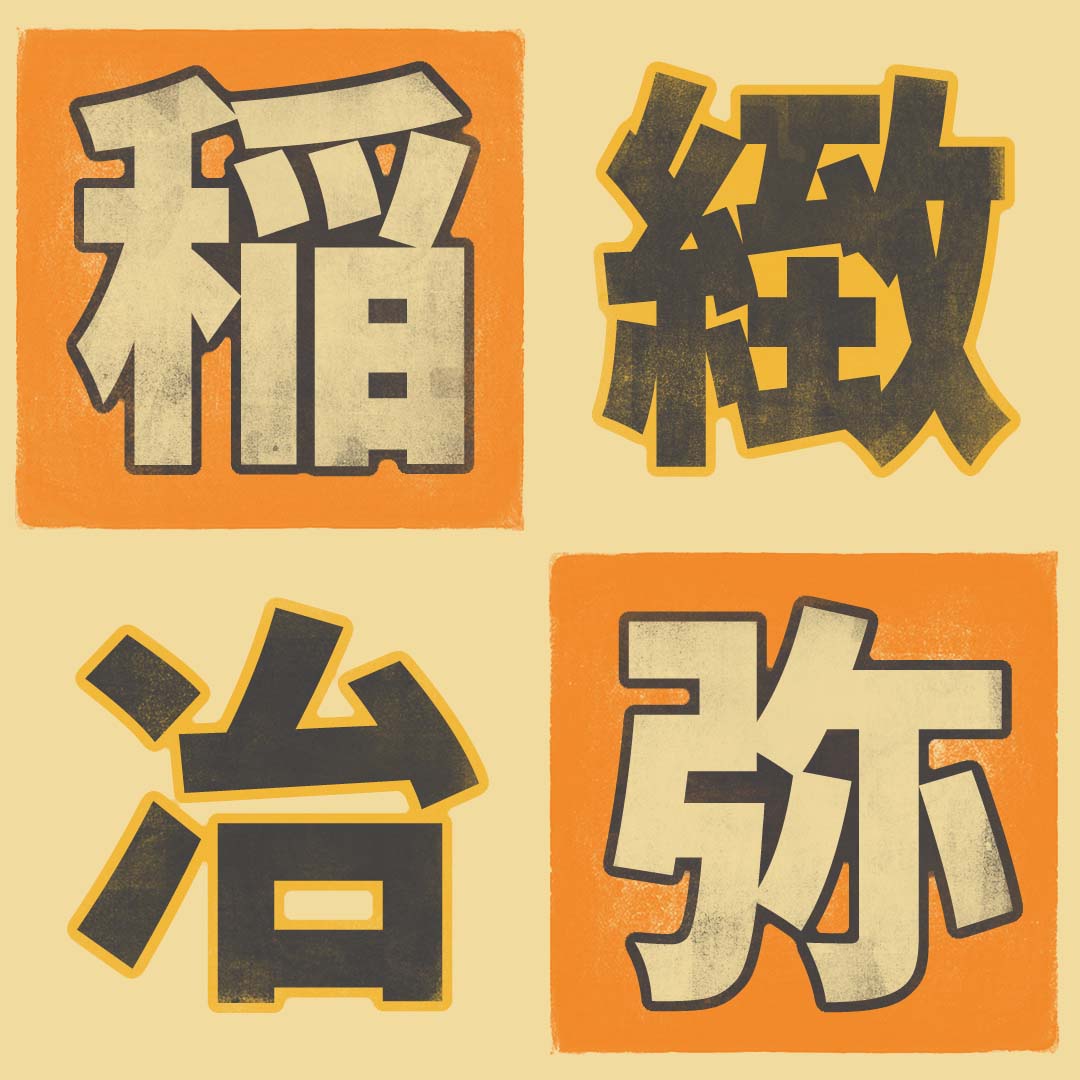
稲
rice plant
JOK: 1656
This kanji has quite a split personality. Growing rice (稲) is a deeply down-to-earth pursuit. But 稲 is also linked to fanciful notions that lightning impregnates rice and that tofu-loving foxes are messengers for the god Inari (稲荷). He is reputed to help with crops, health, sex, and money, so Inari shrines abound, steeped in fox statues and other symbols—all a far cry from farmers’ earthy concerns.
緻
detailed
JOK: 2065
This kanji is about getting the details right. When people are bent on doing that, they go to fascinating extremes. This essay covers books about drawing ultra-detailed otherworldly scenery, playing mah-jongg carefully, and creating sacred rock formations. You'll learn to say, "The company is famous for its accuracy" and "Her dyed works are very elaborate and at the same time dynamic."
冶
melt
JOK: 2119
Find out how far back the Japanese craved metal and see how acquiring it changed society, enabling people to have weapons, tools, coins, bells, sewn clothes, and even sacred mirrors. Learn to talk about metal experts, from blacksmiths and swordsmiths to metallurgists and those who separate metal from ore. Also discover why there are wavy patterns on Japanese sword blades.
弥
increasingly
JOK: 2120
Discover the shocking roots of the language and people of Japan (i.e., Yayoi versus Jomon). Find out about Buddhist figures and terms that have eluded you. And learn to say, “They hooted at his suggestion,” “That makes you even more attractive,” “That’s nothing more than a temporary remedy,” and “The origins of (certain) kanji will make your hair stand on end with fear.”
Kanshudo is your AI Japanese tutor, and your constant companion on the road to mastery of the Japanese language.
To get started learning Japanese, just follow the study recommendations on your Dashboard.
You can use Quick search (accessible using the icon at the top of every page) to look up any Japanese word, kanji or grammar point, as well as to find anything on Kanshudo quickly.
For an overview, take the tour.

